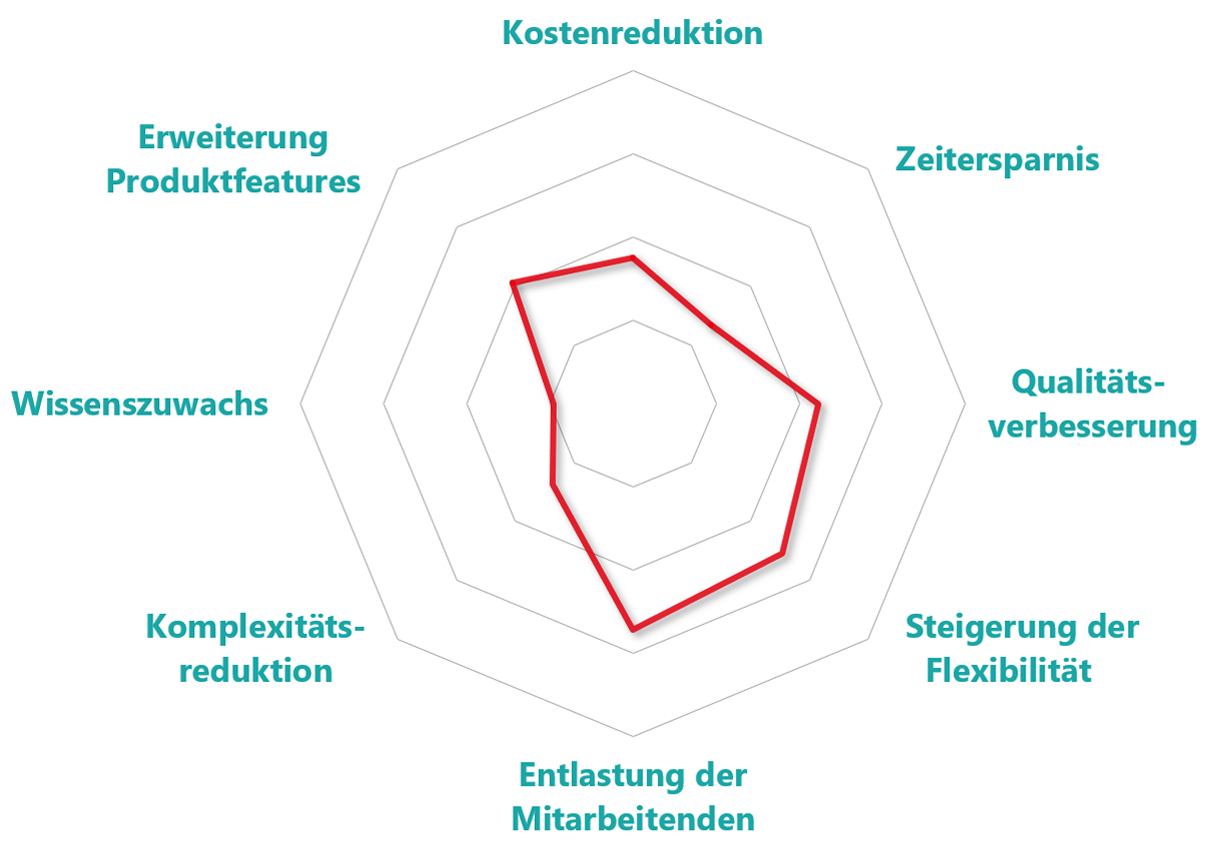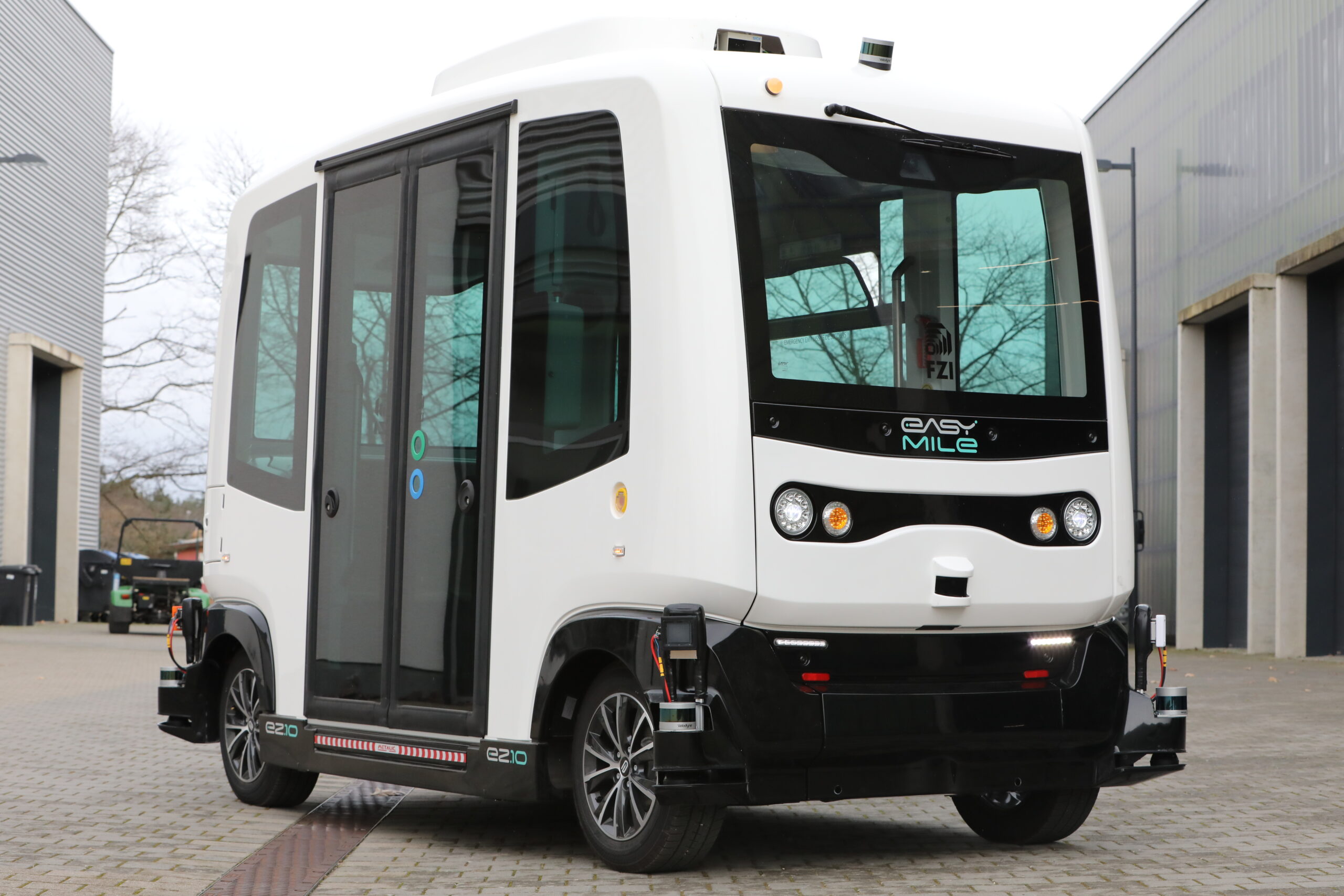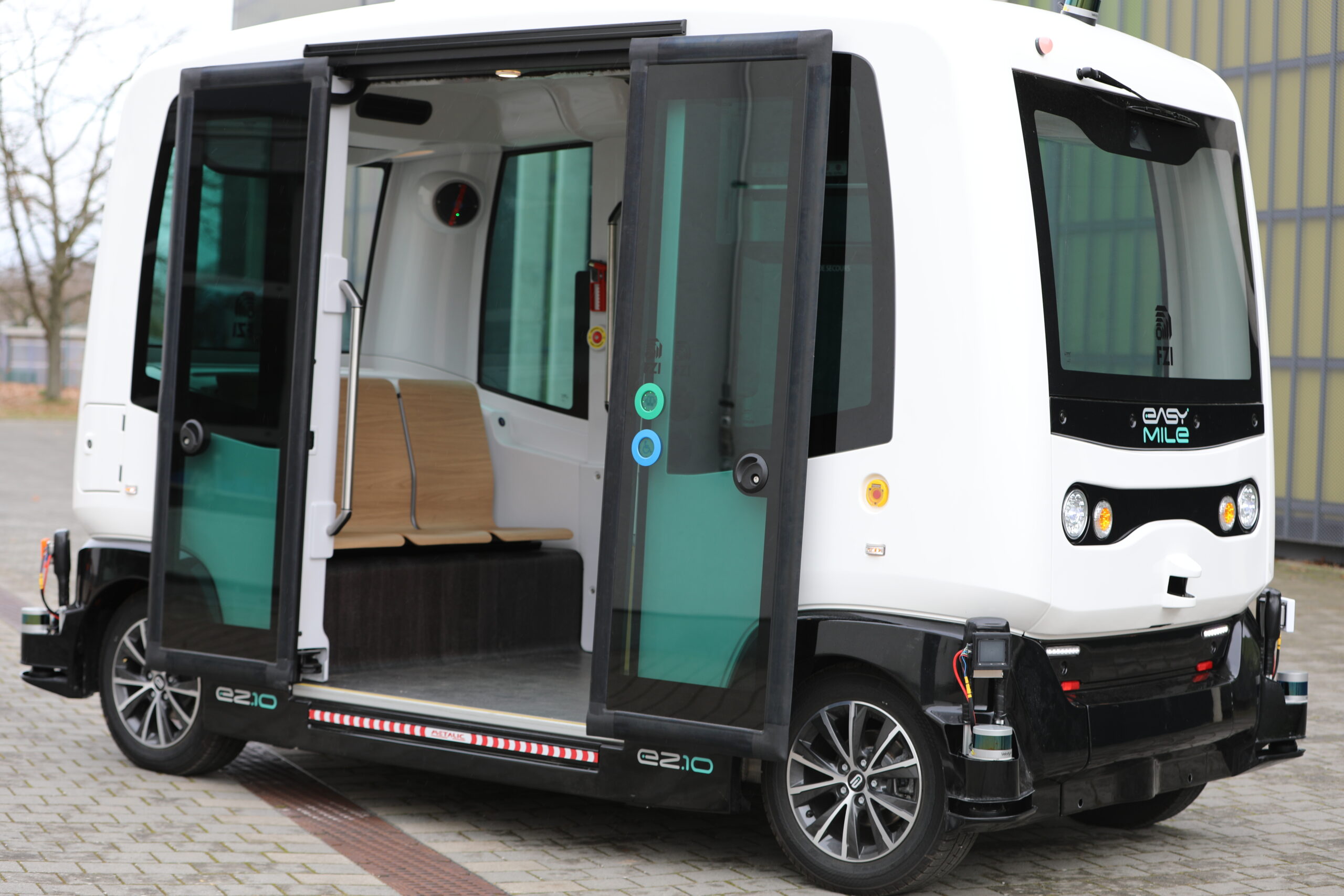Reaching your destination with AI - the working environment in an autonomous shuttle bus
Motivation
With the "Test Field Autonomous Driving", Karlsruhe has a real laboratory in which new technologies and services relating to networked and automated driving in everyday traffic can be developed and future-oriented mobility concepts for private and public transport can be tested. This also includes networked and autonomous bus shuttles that are used for the last mile from the bus stop to the front door. Unlike for passengers, the shuttle is a working environment for safety drivers. They must be highly focused at all times in order to be able to intervene, take over manual control and avert accidents if the worst comes to the worst. In order to provide the best possible support for safety drivers in their day-to-day work, it is therefore important to better understand the working environment and the associated mental strain on drivers.
Objective
The aim of the use case is to investigate the perspective of safety drivers on the use of AI in the working environment of autonomously driving bus shuttles in order to derive new requirements for AI-based driving assistance functions and, above all, for the working environment. As part of this use case, qualitative studies are to be carried out using existing bus shuttles with regard to the mental strain on safety drivers (e.g. stress, fatigue). This also includes recording the safety drivers' satisfaction with the shuttle's AI-based assistance functions. The investigations in this use case are aimed at answering the following key questions:
- To what extent do the competence and stress profiles of safety drivers of autonomous bus shuttles and car drivers differ?
- How satisfied are the safety drivers of autonomous bus shuttles with the user interface? What influence does this interface have on acceptance of and trust in the system?
- What influence does the safety driver's experience have on stress, acceptance and trust?
Approach
As part of the use case, data is collected by means of interviews. For this purpose, safety drivers with different levels of experience are consulted for the investigations. The interviews are used to record self-assessments, domain-specific knowledge and expectations of the AI-based assistance function in the shuttle. In addition, the individual assessment of mental stress during the monitoring of autonomous vehicles will be surveyed. Another focus of the interviews is on the comparison with the strain of driving a car or manually controlling the shuttle. By taking into account the respondents' level of experience, the aim is to investigate how individual experience affects perceived stress and trust in the system.
Added value
The use case promises exciting insights into the perception and evaluation of the support promised by AI systems in the field of autonomous bus shuttles. Specifically, the investigations can be used to determine the skills required by the safety drivers and, on the technical side, the adaptation needs of the AI system with regard to the user interfaces and usability as well as the underlying process. As a result, this leads to increased employee satisfaction thanks to tailored support from AI-based assistance.
Reaching your destination with AI - the working environment in an autonomous shuttle bus

Motivation
With the "Test Field Autonomous Driving", Karlsruhe has a real laboratory in which new technologies and services relating to networked and automated driving in everyday traffic can be developed and future-oriented mobility concepts for private and public transport can be tested. This also includes networked and autonomous bus shuttles that are used for the last mile from the bus stop to the front door. Unlike for passengers, the shuttle is a working environment for safety drivers. They must be highly focused at all times in order to be able to intervene, take over manual control and avert accidents if the worst comes to the worst. In order to provide the best possible support for safety drivers in their day-to-day work, it is therefore important to better understand the working environment and the associated mental strain on drivers.
Objective
The aim of the use case is to investigate the perspective of safety drivers on the use of AI in the working environment of autonomously driving bus shuttles in order to derive new requirements for AI-based driving assistance functions and, above all, for the working environment. As part of this use case, qualitative studies are to be carried out using existing bus shuttles with regard to the mental strain on safety drivers (e.g. stress, fatigue). This also includes recording the safety drivers' satisfaction with the shuttle's AI-based assistance functions. The investigations in this use case are aimed at answering the following key questions:
- To what extent do the competence and stress profiles of safety drivers of autonomous bus shuttles and car drivers differ?
- How satisfied are the safety drivers of autonomous bus shuttles with the user interface? What influence does this interface have on acceptance of and trust in the system?
- What influence does the safety driver's experience have on stress, acceptance and trust?
Approach
As part of the use case, data is collected by means of interviews. For this purpose, safety drivers with different levels of experience are consulted for the investigations. The interviews are used to record self-assessments, domain-specific knowledge and expectations of the AI-based assistance function in the shuttle. In addition, the individual assessment of mental stress during the monitoring of autonomous vehicles will be surveyed. Another focus of the interviews is on the comparison with the strain of driving a car or manually controlling the shuttle. By taking into account the respondents' level of experience, the aim is to investigate how individual experience affects perceived stress and trust in the system.
Added value
The use case promises exciting insights into the perception and evaluation of the support promised by AI systems in the field of autonomous bus shuttles. Specifically, the investigations can be used to determine the skills required by the safety drivers and, on the technical side, the adaptation needs of the AI system with regard to the user interfaces and usability as well as the underlying process. As a result, this leads to increased employee satisfaction thanks to tailored support from AI-based assistance.

Christoph Becker
FZI Research Center for Information Technology
christoph.becker@fzi.de








